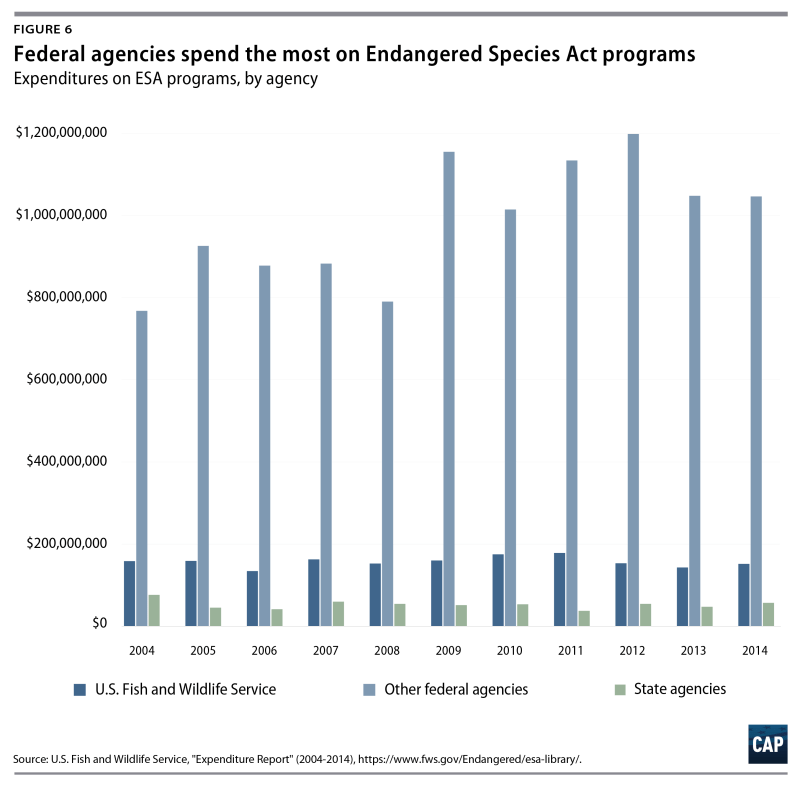Endangered Species Recovery – “The ultimate goal of the law is to ‘save’ the species so that they no longer need protection under the Endangered Species Act.” – U.S. Fish and Wildlife Service ESA Foundation, 50 Years of Endangered Species Conservation, 2023
December 28, 2023, will mark the 50th anniversary of the Endangered Species Act. Since the law was passed fifty years ago, most of the species listed under that law have avoided extinction. However, only a small fraction of the listed species have survived and been extirpated. Most of them are dangerous, they don’t jump off the cliff to lose, but they don’t back down from the edge either.
Endangered Species Recovery

This report offers 10 ideas to increase the recovery of endangered species in the future. It presents wildlife that describes various aspects of endangered species policy, and recommends specific reforms to improve the effectiveness of the law to encourage recovery in the second half of the century and beyond.
Koalacomeback Launches Australian Endangered Species Recovery Fund
50 years after its introduction, the Endangered Species Act is also the most popular and controversial piece of environmental legislation. Popularity is easy to understand. Its well-known goal of disease prevention deserves universal support, especially when it comes to endangered animals like eagles and grizzly bears. And the law proved effective in achieving this goal, with 99 of the designated species still in existence today.
If the law’s popularity is based on its “why,” controversy arises from its “how.” Wildlife law has gained a reputation as the “pie of environmental law”. Not only does it impose strict laws, but as one landowner once said, “They’ll catch you, they won’t let you.”
Tate Watkins, “If Frogs Had Wings, Would They Fly to Louisiana?” Report 37, No. 1 (2018). Regulatory authority—the strongest environmental law in the United States—The Code affects land use decisions across the country. And since two-thirds of the listed species rely on private lands for habitat, these restrictions can be particularly burdensome for landowners.
Unfortunately, the strictness of the law defeats its main purpose of saving the species. By placing regulatory burdens on any area where a species or habitat is found to be in short supply, the law imposes the kinds of responsibilities that landowners must avoid. This creates a perverse incentive for landowners to destroy habitat before a species becomes scarce and suffers the legal consequences that follow.
Research For The Recovery Of Endangered Species
See, for example, Jonathan H. Adler, “The Leaky Ark: The Failure of Endangered Species Regulation on Private Land,” in Rebuilding the Ark: New Perspectives on Endangered Species Reform, ed. Jonathan H. Adler (Washington, D.C.: AEI Press, 2011). And because the law relies entirely on punitive measures, there is little incentive for landowners to take the necessary steps to restore habitat and save species.
As such, the Dream Catcher Act has a poor track record of success. Only 3 endangered or threatened species have survived. The U.S. The Fish and Wildlife Service reports that only 4 species are listed as advanced.
US Department of the Interior, “2017/2018 Annual Performance Plan & 2016 Report” 15 (26 May 2017). According to the department’s assessments, 85 of the listed species have completed less than a quarter of their recovery projects.
Katherine Wright and Shawn Regan, “Missing the Sign: How the Endangered Species Act Fails Its Recovery Goals,” Center for Natural and Environmental Studies (2023) endangered species for years, if not more. ten years, longer than expected. The agency had predicted that 300 species would recover so far, but only 57 species have done so.
Congress To Protect Endangered Species
The Endangered Species Act’s promise to save species “to the extent that federal regulations are “inadequate” requires reforming legislative incentives and finding new, easier ways to provide gifts for endangered species to landowners who care about them. restore their house.
The Endangered Species Act requires the Fish and Wildlife Service and the National Marine Fisheries Service to list species that are threatened with extinction or at risk of extinction in the future as “threatened” or “threatened.” make a. ” respectively. There is often a list of laws for the countries where the species is found and its habitat, including prohibitions on “taking” – any act that harms – an endangered species. It also monitors the actions of government that affects a species or its “critical habitat,” provides areas of public or private land that are considered important to the survival of the species.This oversight overrides federal permits for activities on private lands under other laws federal laws, such as the Clean Water Act, are expanding.
These restrictions are extensive and include federal, state, and private conservation programs that may cause minor short-term damage to the species but have long-term benefits for the species. For example, Endangered Species Act laws designed to protect habitats from wildfires have expanded, prevented the reintroduction of animals into suitable habitats from harm, and led to innovative marketing opportunities that provide diversity to homeowners and businesses. brings arrest. . There are often no good incentives to pay for these negative effects of legislation on landowners and others who live in rare species or protect their habitat.
Instead of encouraging cooperative conservation, the law’s approach to managing species and their habitats often leads to conflict between federal agencies, states, landowners, and conservation groups, and species will die out. States and country leaders are considered legal targets for government officials, not partners who protect their rights, prevent them from cooperating with government programs, or provide information about the existence of species and their habitats. And some environmental groups are reluctant to seek legal action on behalf of landowners because the law requires defendants to enforce their restrictions, promising to pay attorneys’ fees if successful.
Legislators From 41 States Call For Stronger Efforts For Endangered Species Recovery
A major challenge in Endangered Species Act in the second half of the century was the speed of recovery of threatened and endangered species. Fortunately, government officials, private landowners, and conservation organizations have developed a variety of innovative and voluntary tools to encourage and finance restoration efforts. If the responsibilities and legal relationships between the various parties, states, landowners and conservationists are resolved, these instruments can be expanded to do more to protect the species.
To help with this, this report explores 10 ideas for improving the law or its implementation to better encourage conservation efforts, encourage federal and state innovation, and—ultimately—endangered species have a non-liable existence for the masses. private land owners are responsible for maintenance and restoration.
The West Indian manatee, also known as the “sea cow”, is a very close relative of the elephant. One of the first species listed under the Endangered Species Act, Florida’s official marine mammal numbered only a few hundred in the early 1970s.

U.S. Department of the Interior, “Manatee Reclassified from Endangered to Threatened as Habitat Improves and Population Expands – Federal Protection Remains in Place,” Press Release, March 30, 2017. Loss of Natural Resources and other warm water habitats first anger species.
Usfws Pacific Region — 2014 Endangered Species Recovery Champions!
Fortunately, the manatee’s popularity has encouraged governments, landowners, and conservation groups to invest in protecting and restoring habitats. Save Crystal River, a local nonprofit conservation project, has spent years restoring more than 800 natural hot springs clogged with silt and sediment, planting seagrass, and removing phosphorus to improve water quality. These and other investments have paid off. The population has reached 8 thousand and is increasing in the former East and West regions.
In the Save Crystal River campaign in 2017, the US Fish and Wildlife Service upgraded the status of the species from threatened to endangered in the Save Crystal River campaign. It has been reported that the power renewal will not result in any changes to state laws, an official dismissed as a “hoax” and threatened a separate division.
The manatee story highlights a major flaw in the Fish and Wildlife Service’s enforcement of the Endangered Species Act. Instead of using two legal classifications to encourage and reward rescues, the agency does exactly the same thing as listed species. This undermines the incentives that Congress originally built into the law, which allows for regulatory relief as a species’ status moves from endangered to threatened.
The agency recently reinstated the original two-step approach to encourage more recovery efforts, but the change may backfire, hurting states, tribes, landowners and vulnerable species like the manatee. Today, more investments are needed to improve water quality and restore the seagrass beds that species depend on. But the service’s inability to pay for the future will hamper recovery efforts.
Word Cloud For Endangered Species Recovery Plan Stock Illustration
In addition to designating a species that is currently endangered as “threatened,” the Endangered Species Act provides a list of “threatened” species that may become endangered in the future.
16 U.S.C.
Endangered species in sc, recovery of endangered species, species recovery, definition of endangered species, species endangered, rhinoceros endangered species, endangered species recovery plan, plant endangered species, endangered species recovery program, black rhino endangered species, lion endangered species, msc endangered species recovery and conservation
- Conservation Education Programs 2023 - August 19, 2024
- Endangered Species Protection - August 16, 2024
- Wildlife Habitat Preservation 2024 - August 15, 2024







